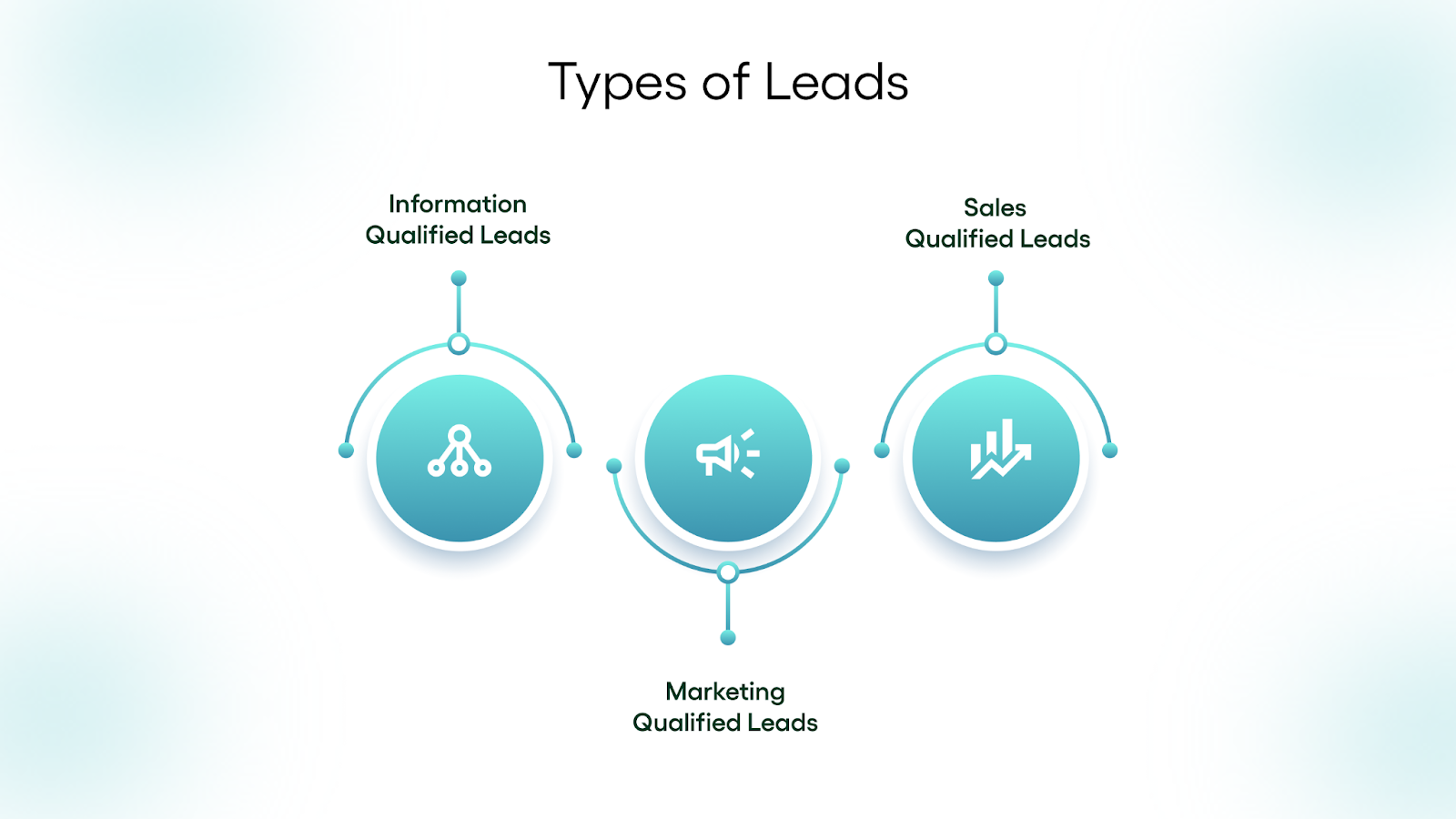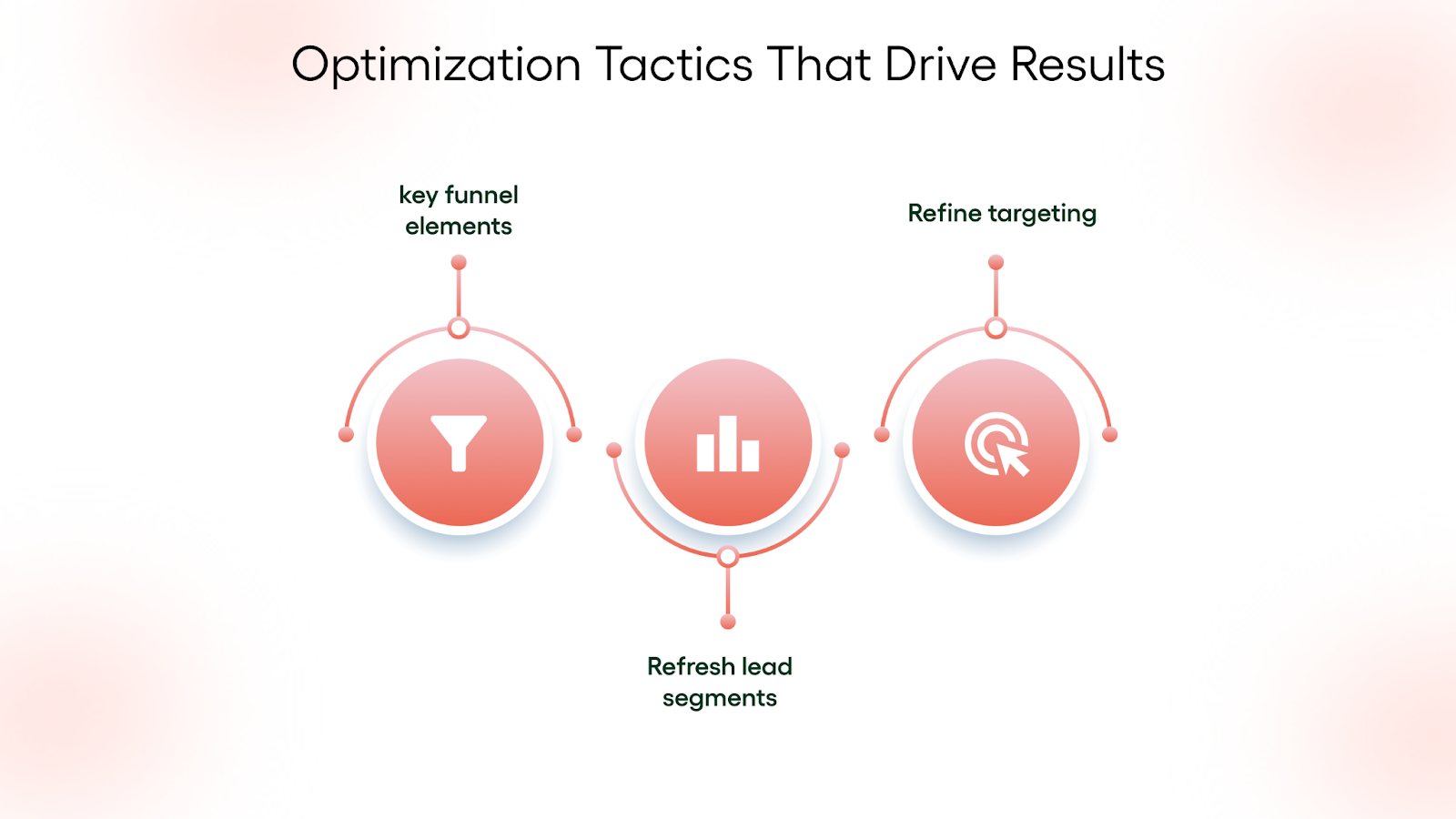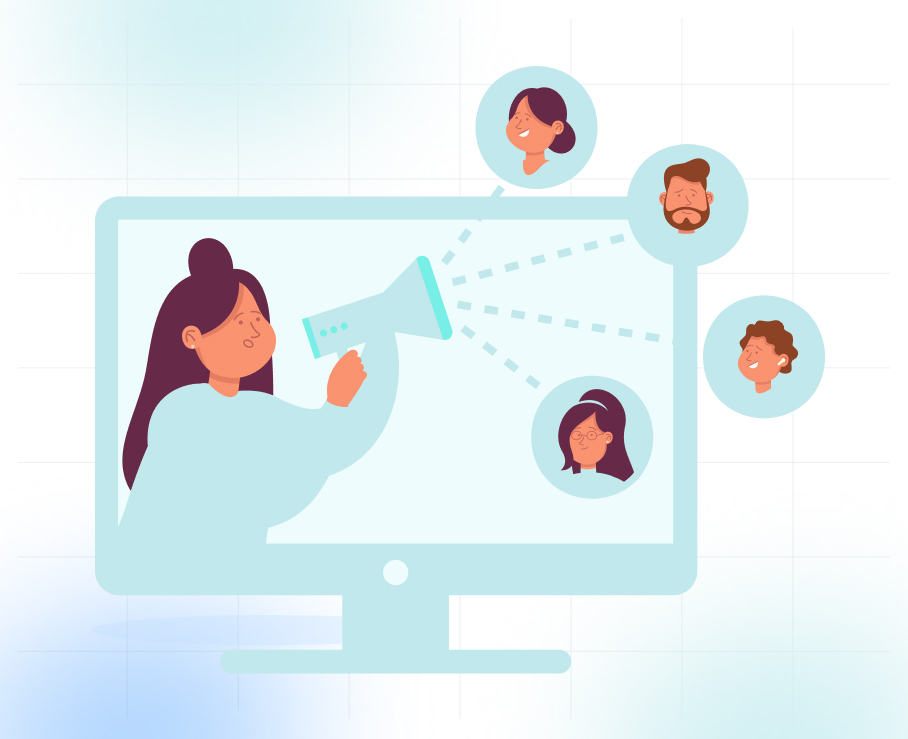
Understanding Lead Marketing: A Comprehensive Guide

Every sales conversation starts with a lead, but getting the right ones takes more than luck. Lead marketing helps businesses connect with potential buyers who actually need what they offer. It’s a focused, methodical approach that brings structure to outreach and clarity to conversion. When done right, it fuels consistent growth by turning interest into opportunity.
In this guide, you’ll learn what lead marketing involves, how it supports the sales process, and why it plays a key role in building a healthier pipeline and boosting monthly recurring revenue.
TL;DR
- Lead marketing relies on clearly defined lead stages, such as IQL, MQL, and SQL, to help sales teams prioritize outreach and improve conversion efficiency.
- High-performing funnels begin with lead magnets that solve specific pain points, making it easier to attract qualified contacts from the start.
- Content marketing and segmented email workflows consistently deliver strong results for B2B firms, especially in sectors with longer sales cycles like MSPs and staffing.
- Tracking metrics such as lead-to-SQL ratio, email engagement, and MRR impact provides the insight needed to refine campaigns and focus resources.
- Working with a partner like TLM simplifies execution through qualified lead generation, targeted appointment scheduling, and campaign strategies aligned with sales goals.
What Is the Meaning of Lead in Marketing?
Lead marketing is the process of generating interest from potential buyers through targeted outreach and content-driven campaigns. The goal is to build a pipeline of qualified prospects who are more likely to convert into customers.
Attracting these leads requires a consistent presence across multiple channels, such as email, content marketing, and paid advertising campaigns. A strong lead marketing strategy helps businesses reach the right audience at the right time, creating steady engagement and improving conversion rates across the sales funnel.
Each lead moves through different stages, so let’s take a look at the types and how to engage them more effectively at the right time.
You can also check our blog, Lead Generation Strategies for Manufacturing Companies.
Types of Leads

Each type of lead represents a different level of interest and readiness, helping sales and marketing teams focus their efforts more efficiently.
1. Information-Qualified Leads (IQL)
These leads are at the very beginning of the buyer journey. They’ve shown curiosity by accessing educational content, such as blogs or guides, but haven’t yet interacted with marketing offers or shown intent to engage further. The focus here is on awareness and early nurturing.
2. Marketing-Qualified Leads (MQL)
MQLs have taken specific actions that signal growing interest, such as subscribing to a newsletter, downloading a resource, or attending a webinar. They’re more engaged than IQLs and are often ready to receive targeted messaging or campaign-based communication.
3. Sales-Qualified Leads (SQL)
SQLs show a clear intent to buy. These leads meet predefined criteria based on behavior, interest level, and fit. They’ve often requested a meeting or responded positively to outreach, indicating they’re ready for direct sales engagement.
Now, let’s look at how to build a funnel that attracts, qualifies, and converts them effectively.
Also, check out How to Set Sales Qualified Lead Appointments.
5 Steps to Build a High-Impact Lead Marketing Funnel

A reliable lead marketing funnel is designed to move decision-makers from awareness to action through structured, measurable steps. For MSPs, tech providers, staffing firms, and manufacturers, that means building a process that supports sales readiness, qualified engagement, and predictable Monthly Recurring Revenue (MRR).
Here’s how to build a lead funnel that contributes meaningfully to your sales pipeline:
Step 1: Leverage Content to Attract Qualified Traffic
For B2B firms, buyers typically research independently before ever speaking to a sales rep. This means content must reflect real search intent and job-specific pain points.
To attract leads that fit your ICP:
- Focus on problem-solving blogs, not product overviews
- Publish case studies showing real pipeline or cost-efficiency impact
- Use SEO-optimized landing pages tailored by role or vertical
- Repurpose whitepapers into short LinkedIn posts or video snippets
TLM’s Targeted Campaigning service helps extend this reach by delivering your content to verified decision-makers at accounts that matter.
Step 2: Create Lead Magnets That Solve Real Problems
Lead magnets must speak directly to the pain points your buyers face, especially in complex B2B sales cycles where trust and context matter more than form-fill gimmicks.
Effective examples by sector:
- MSPs: “Cyber Risk Checklist for SMB Clients” (helps MSPs attract CIOs evaluating IT vendors)
- Staffing Firms: “Hiring Budget Planner for Q4” (targets HRs or Finance Heads in hiring phase)
- Tech Companies: “5 ROI Benchmarks for Mid-Market SaaS Platforms”
- Manufacturing: “Inventory Waste Reduction Toolkit”
You can also use TLM’s Lead Generation Services to create value-led campaigns built around industry-specific problems.
Step 3: Use Smart Forms and Popups to Capture Leads
Once you’ve got their attention, converting visitors into leads depends on how and where you ask. Bad forms cost good opportunities.
Here are some smart ways to structure capture points:
- Use multi-step forms that don’t overwhelm visitors
- Include job titles or firmographics to segment automatically
- Place popups only on exit-intent or scroll-based triggers, not on homepage loads
- Share forms via social platforms to drive off-site conversions (ideal for gated reports or eBooks)
TLM also offers Appointment Scheduling support, qualifying and booking meetings with the leads captured through such forms.
Step 4: Promote Strategically, Without Overspending
Paid promotion is necessary, but only when it’s precise. Most B2B firms waste ad budgets on platforms or audiences that never convert.
Below are some better ways to promote:
- Target roles like "IT Director" or "HR Manager" by industry and company size
- Build remarketing lists based on visits to high-intent pages like pricing or case studies
- Invest in email outreach using permission-based lists instead of relying solely on ads
- If the budget is tight, test content syndication or niche newsletters instead of large platforms
For campaigns that align with buyer journeys, not just ad impressions, TLM’s Demand Generation services can help maximize impact per dollar.
Step 5: Nurture Leads with Segmented Email Workflows
Leads need context and time. Not all are ready to buy when they fill out a form, but timely and relevant communication can change that.
Some effective nurturing strategies include:
- Build separate workflows for cold leads, content leads, and past inquiries
- Personalize subject lines and follow-up intervals based on lead type
- Send industry-specific pain point content every 7–10 days
- Highlight case studies or ROI metrics to encourage meeting bookings
You can also streamline this using TLM’s email-focused targeted campaigning and nurture support, keeping the message consistent and the funnel active.
Recommended: Effective Email Marketing for Demand Generation.
Once your funnel is in place, the next step is to track how it performs and make improvements that boost results over time.
Tips for Tracking Performance and Optimizing Funnel Output

Building a lead marketing funnel is only half the work—tracking how it performs is where the real value emerges. Without clear metrics and optimization cycles, even well-structured funnels can underperform.
Here are the key performance indicators (KPIs) every sales leader or marketing manager should monitor:
Lead-to-SQL Ratio
This metric shows how many leads actually turn into Sales-Qualified Leads. A low ratio usually signals poor lead quality or misaligned targeting.
Here’s what you can do if it’s low:
- Revisit your lead magnet topics to check if they are attracting the right job roles.
- Refine your audience filters in email and campaigns
- Use qualification questions in your lead capture forms and appointment scheduling workflows
Email Open and Response Rates
Especially in B2B, where inboxes are crowded and open, and response rates are strong indicators of content relevance.
Benchmark to aim for:
- Open rate: 20–30%
- Response rate: 8–12% (for well-targeted outreach)
How to improve:
- Test subject lines and send times (Tuesdays & Thursdays often perform better)
- Segment by role, industry, or buying stage
- Use messaging that highlights problems solved, not features offered
Read: The Best Time to Send Marketing Emails in 2025
MRR Impact from SQLs
Ultimately, every funnel must tie back to Monthly Recurring Revenue (MRR). Tracking how much revenue comes from SQLs helps validate your targeting and nurture efforts.
How to measure this:
- Assign a unique campaign code or source to each SQL
- Use deal-stage tracking to see conversion velocity
- Focus follow-up resources on lead sources that convert the fastest
Optimization Tactics That Drive Results

Ongoing funnel performance depends on deliberate testing and refinement. Consider implementing these across your campaign workflows:
- A/B test key funnel elements: Test variations of landing page headlines, CTA phrasing, and lead magnet formats to identify what resonates best with your target audience. Small tweaks can significantly improve conversion rates when backed by data.
- Refine targeting and messaging: Regularly sync with your sales reps to understand why some leads move forward and others stall. Their insights into objections and buying triggers can help adjust email scripts, campaign offers, and qualification criteria.
- Refresh lead segments every 30–60 days: Regularly clean your audience lists by updating them based on engagement history, pipeline status, and firm size. Removing inactive leads and prioritizing newly engaged contacts helps keep your campaigns relevant and enhances the quality of responses.
Here are some Proven Strategies and Expert Tips to Improve Lead Generation and Boost Your Sales.
For teams looking to improve lead quality and sales efficiency, partnering with the right support can make all the difference.
How TLM Supports B2B Lead Marketing
Every well-built lead marketing funnel needs the right support to stay consistent, targeted, and results-driven. While strategy provides the structure, execution is what impacts real metrics, pipeline health, lead quality, and Monthly Recurring Revenue (MRR).
TLM (The Lead Market) helps B2B companies put their lead marketing strategies into action. With a focus on quality and conversion readiness, TLM works closely with MSPs, staffing firms, tech providers, and manufacturing companies to improve lead qualification, reduce sales friction, and create predictable growth.
Here’s how TLM adds value across the funnel:

- Sales-Qualified Lead (SQL) Generation: Identify and deliver leads that match your ideal buyer criteria, ready for direct sales conversations.
- Targeted Appointment Scheduling: Free up your sales team’s time by booking qualified meetings directly into their calendars.
- Account-Based Marketing & Targeted Campaigning: Run industry-specific outreach to engage high-value accounts using custom messaging and verified contact data.
- Demand Generation Support: Keep your pipeline warm through multi-channel outreach and consistent follow-ups.
These services are designed to help sales leaders close the gap between marketing activity and revenue impact, while keeping growth sustainable. Schedule a call with us today to strengthen your sales funnel with qualified leads and measurable outcomes.
FAQs
1. What is lead marketing in B2B sales?
Lead marketing refers to strategies and campaigns aimed at attracting potential business clients and guiding them through the sales funnel, ultimately generating Sales-Qualified Leads (SQLs) that are ready for engagement.
2. How is lead marketing different from general advertising?
While advertising creates awareness, lead marketing focuses on capturing contact details, nurturing interest, and moving prospects closer to a buying decision through targeted content and follow-ups.
3. What types of businesses benefit most from lead marketing?
Lead marketing is especially effective for B2B companies with longer sales cycles, such as MSPs, staffing firms, SaaS providers, and manufacturers, who need qualified leads to improve conversion rates.
4. How can I improve the quality of leads from my campaigns?
Use targeted outreach, clear qualification criteria, and segmented email workflows. Services like targeted campaigning and lead generation from TLM help ensure your funnel attracts the right audience.
5. What metrics should I track to measure lead marketing success?
Key metrics include lead-to-SQL conversion rate, email open and response rates, and MRR generated from qualified leads. Monitoring these regularly helps fine-tune funnel performance.






